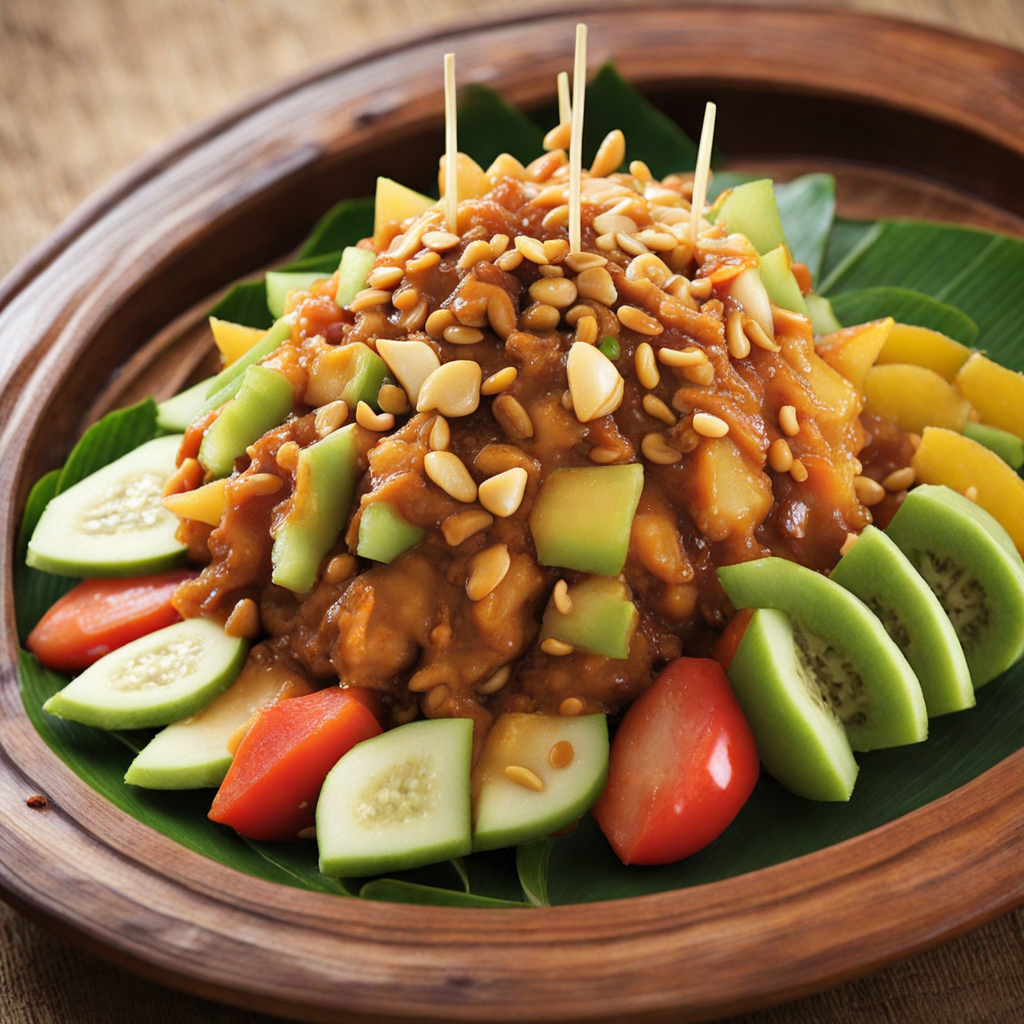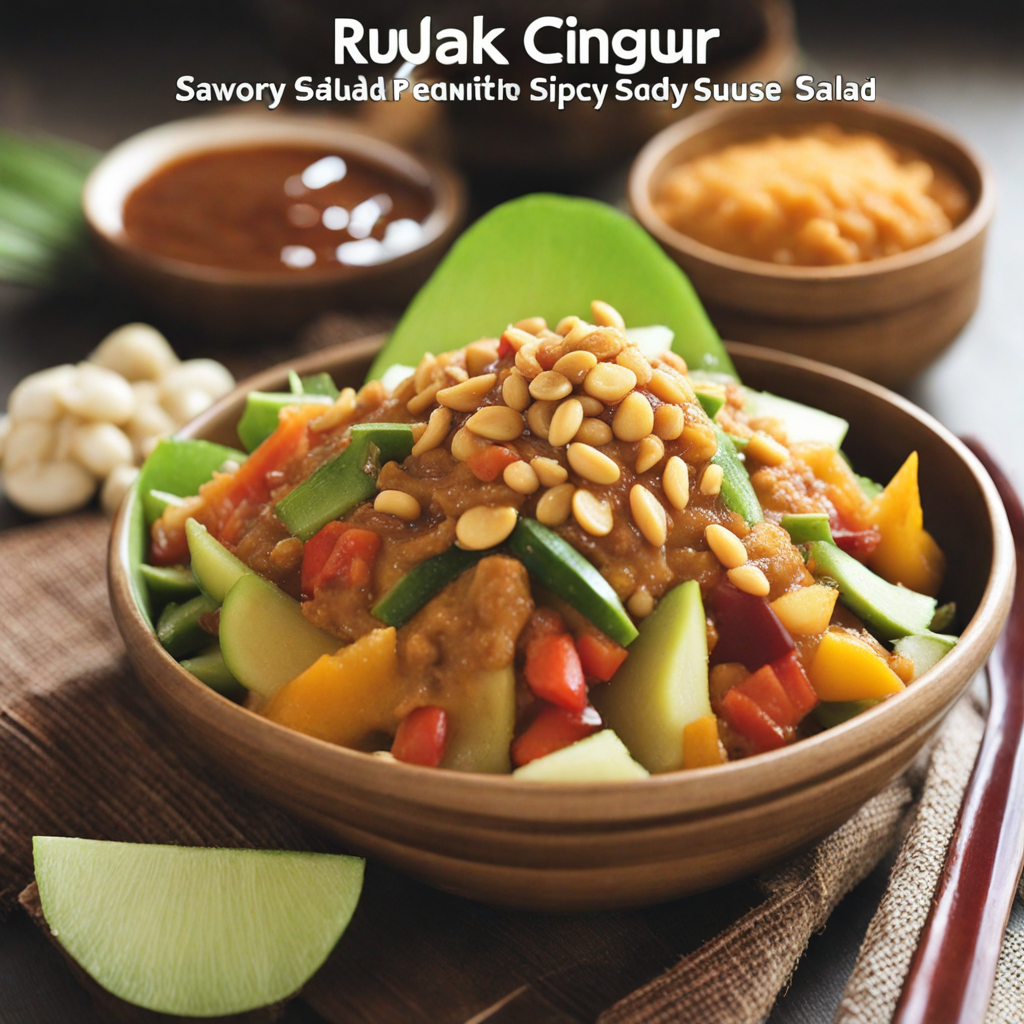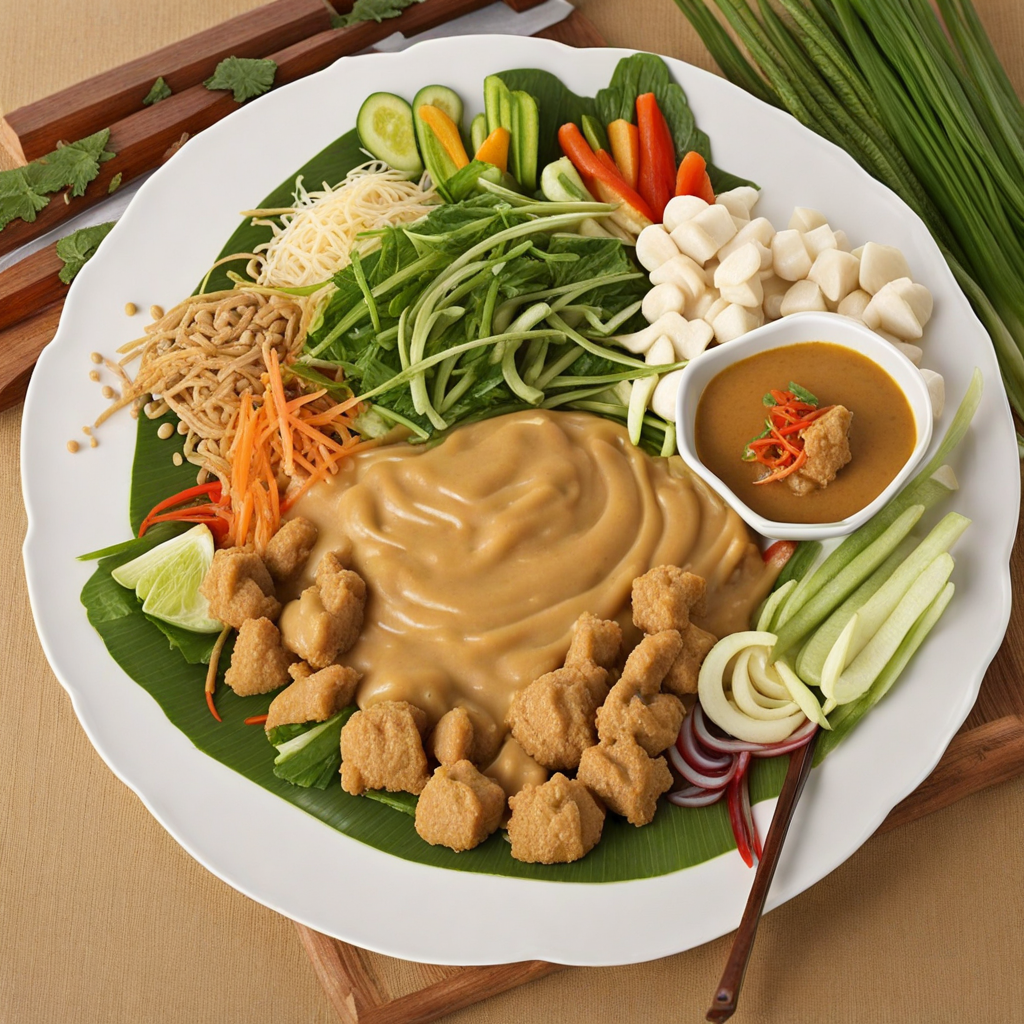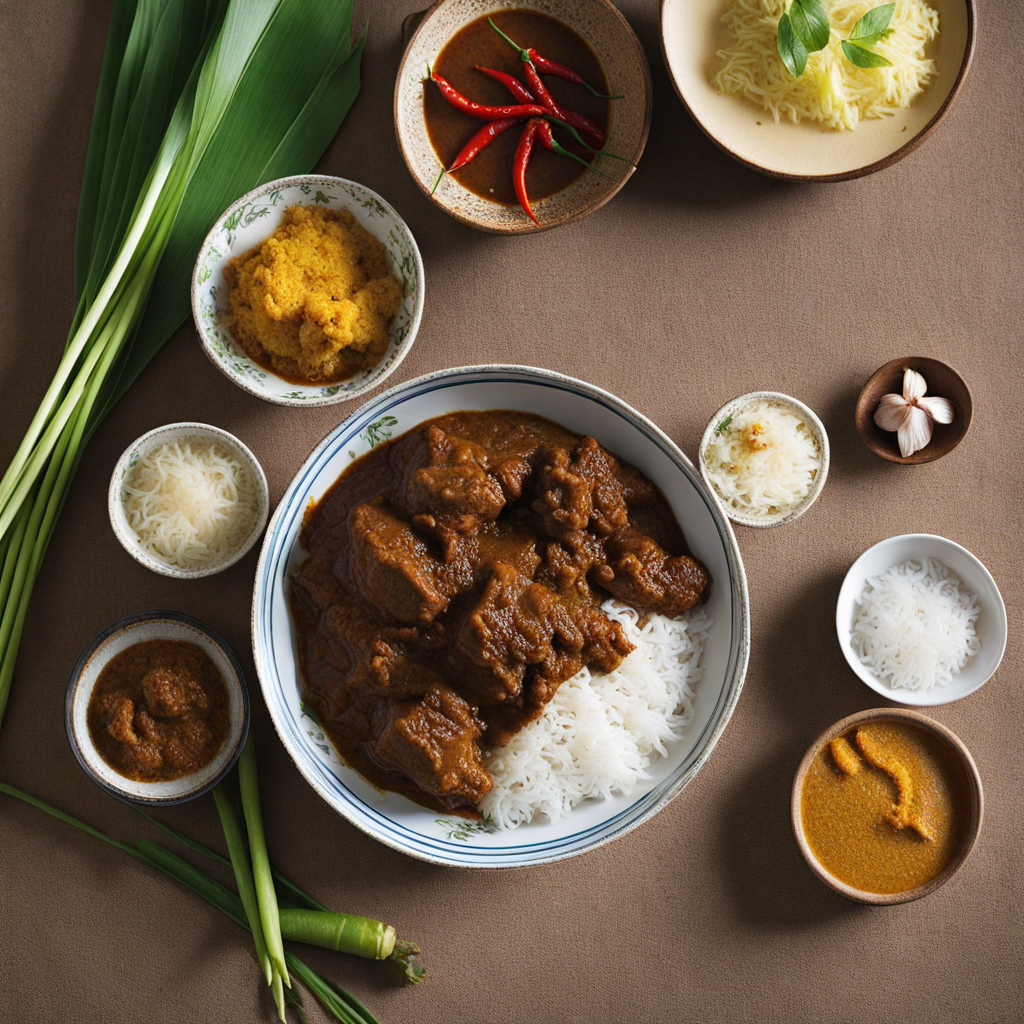Rujak Cingur
Rujak Cingur is a refreshing and vibrant Indonesian salad that stands out for its unique combination of flavors and textures. At its core, this dish typically features a mix of fresh fruits and vegetables, such as cucumber, jicama, bean sprouts, and pineapple, all finely sliced to create a colorful medley. What sets Rujak Cingur apart is the addition of cingur, which means "snout" in Indonesian—referring to boiled beef snout that adds a rich, meaty dimension to the dish. The crunchy vegetables and succulent meat create a delightful contrast that tantalizes the taste buds. One of the most crucial components of Rujak Cingur is its signature sauce, made from a blend of ingredients like ground roasted peanuts, fermented shrimp paste, tamarind, and a touch of chili for heat. This sauce is not only savory and slightly sweet but also offers a complex umami flavor that enhances the freshness of the salad. The balance of sweetness, spiciness, and tanginess creates a harmonious taste experience that is both refreshing and satisfying, making it a popular choice among locals and visitors alike. Rujak Cingur is often enjoyed as a street food snack, served in a bowl or on a plate, and garnished with a sprinkling of sesame seeds for added crunch. It reflects the rich culinary heritage of Indonesia, showcasing the country's love for bold flavors and diverse ingredients. Whether you're a seasoned food lover or new to the flavors of Southeast Asia, Rujak Cingur promises an exciting and unforgettable culinary adventure.
How It Became This Dish
Origin of Rujak Cingur Rujak Cingur is a traditional Indonesian salad that hails from the vibrant culinary landscape of East Java, particularly from the city of Surabaya. The name "Rujak Cingur" itself provides insight into its primary ingredients: "rujak" refers to a Javanese fruit salad, while "cingur" means "snout," specifically referring to the cooked cow's snout that is a distinctive feature of this dish. The origins of Rujak Cingur can be traced back to the indigenous cultures of the region, where various forms of rujak have been enjoyed for centuries, with each region adding its own spin based on local ingredients and customs. The preparation of Rujak Cingur typically includes a medley of fresh fruits and vegetables, such as mango, cucumber, and bean sprouts, combined with the unique addition of cingur. The dish is dressed with a spicy, rich sauce made from ground peanuts and a blend of spices, which gives it a distinctive flavor profile. The incorporation of cingur not only adds a chewy texture but also reflects the culinary practices of using all parts of the animal, a common theme in many traditional Indonesian dishes. \n\n Cultural Significance Rujak Cingur holds a significant place in Indonesian culture, particularly in East Java, where it is often regarded as a symbol of local identity and pride. It is more than just a dish; it embodies the communal aspect of Indonesian food culture. Traditionally enjoyed at gatherings, celebrations, and even as street food, Rujak Cingur brings people together, fostering a sense of community and shared culinary heritage. In Surabaya, Rujak Cingur is not only a popular food choice but also a staple in the local diet. Its presence in everyday life highlights the importance of fresh, local ingredients and the culinary traditions passed down through generations. The dish is often served with rice cakes, creating a harmonious balance of flavors and textures. The cultural significance of Rujak Cingur is further amplified by its role in local festivals and culinary events, where it is showcased as a quintessential representation of East Javanese cuisine. \n\n Development Over Time Over the years, Rujak Cingur has evolved from its humble beginnings to a dish celebrated far beyond its regional roots. The basic concept of the dish remains consistent, but variations have emerged as chefs and home cooks experiment with ingredients and presentation. Some modern interpretations incorporate additional elements such as fried tofu or tempeh, enhancing the dish's nutritional profile and appeal. The globalization of food culture has also influenced Rujak Cingur, leading to its inclusion in menus at restaurants and food festivals around the world. As Indonesian cuisine gains recognition on the international stage, Rujak Cingur has become a culinary ambassador, introducing people outside Indonesia to the rich flavors and traditions of East Javanese cooking. This exposure has not only heightened interest in the dish but has also sparked conversations about the importance of preserving traditional recipes and culinary practices. \n\n Ingredients and Preparation The traditional preparation of Rujak Cingur begins with the careful selection of ingredients. Fresh fruits such as ripe mangoes, young papayas, and apples are commonly used, alongside vegetables like cucumbers, bean sprouts, and water spinach. The cow's snout, which is boiled until tender, is sliced into bite-sized pieces and becomes a vital component of the dish. The dressing is what truly distinguishes Rujak Cingur from other types of rujak. It is made by grinding roasted peanuts with palm sugar, tamarind, chilies, and salt to create a thick, savory-sweet sauce. This dressing is then drizzled over the assembled salad, allowing the flavors to meld beautifully. The dish is typically garnished with a sprinkle of fried shallots and served with rice cakes or lontong, a traditional Indonesian rice cake made from compressed rice. \n\n Regional Variations While Rujak Cingur is most closely associated with Surabaya, variations of the dish can be found throughout Indonesia, reflecting the diverse culinary landscape of the archipelago. Each region adds its own twist, using locally available ingredients and adapting the dressing to suit local palates. For instance, in Bali, you might find a version that incorporates more tropical fruits and a spicier sauce, showcasing the island's bold flavors. The popularity of Rujak Cingur has also led to creative adaptations in urban areas, where street vendors and modern eateries experiment with fusion styles. Some contemporary renditions include seafood or other meats, catering to changing tastes and dietary preferences. Despite these innovations, the essence of Rujak Cingur remains intact, honoring its traditional roots while embracing the culinary evolution of Indonesia. \n\n Conclusion: A Culinary Heritage Rujak Cingur is more than just a dish; it is a celebration of East Javanese culture, history, and community. Its enduring popularity speaks to the timeless appeal of fresh, flavorful ingredients and the importance of food as a means of connection. As it continues to evolve and reach new audiences, Rujak Cingur stands as a testament to the richness of Indonesian culinary heritage, reflecting both the past and the future of this vibrant food culture. The dish serves as a delicious reminder of the diverse flavors and traditions that make up Indonesia's culinary identity, inviting everyone to savor a piece of its history with each bite.
You may like
Discover local flavors from Indonesia







